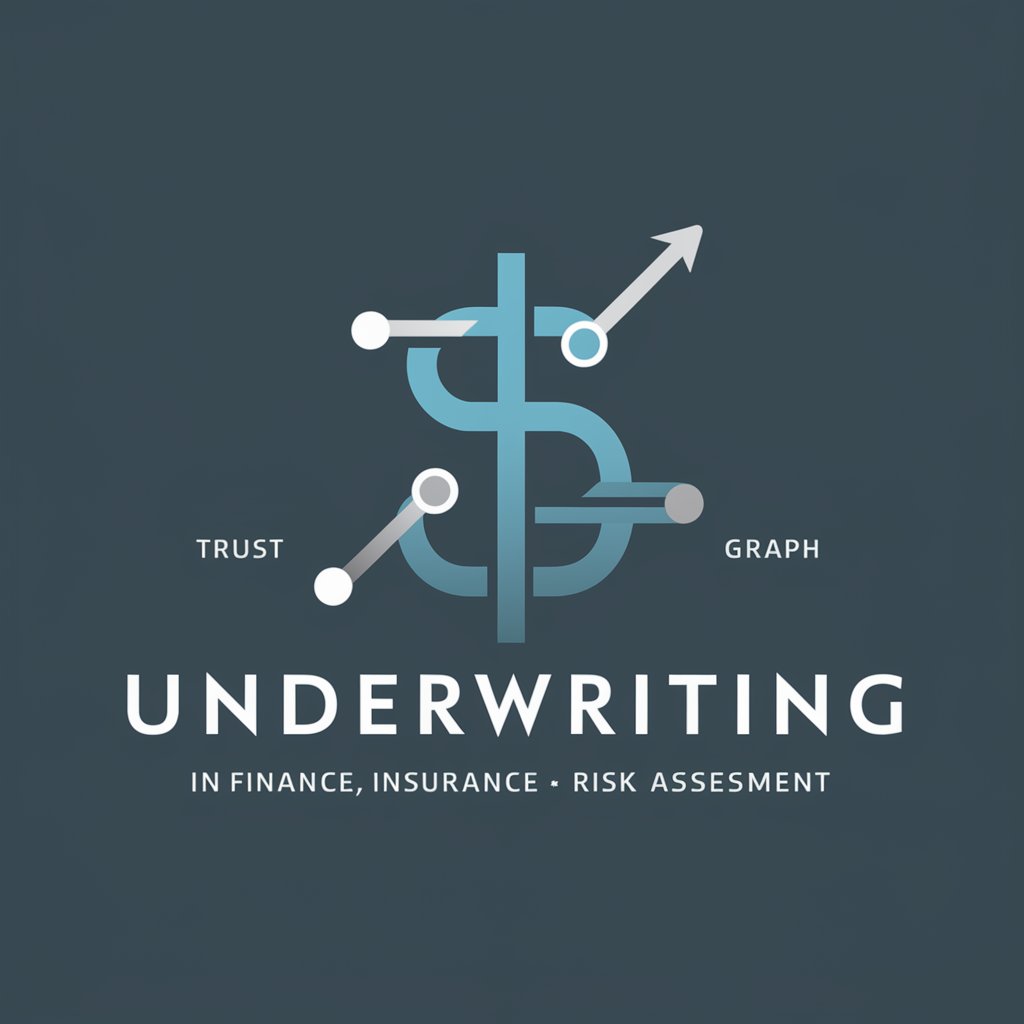Underwriting - Underwriting Insights and Tools

Welcome! How can I assist you with underwriting today?
Empowering Risk Decisions with AI
What are the key steps involved in the underwriting process for life insurance?
How does credit underwriting differ from insurance underwriting?
Can you explain the role of risk assessment in financial underwriting?
What factors do underwriters consider when evaluating a mortgage application?
Get Embed Code
Introduction to Underwriting
Underwriting is a fundamental process used in the finance and insurance industries to assess and manage risk. The primary function of underwriting is to evaluate the risk of insuring a client or issuing a financial product, such as a loan or an insurance policy, and then deciding on the terms and pricing of that product. This process involves a detailed analysis of the applicant's information, including financial health, credit history, and, in the case of insurance, potential risk factors. For example, in health insurance, underwriting would involve assessing an applicant's medical history, age, lifestyle, and other risk factors to determine the premium and coverage terms. In finance, underwriting might include analyzing a company's financial statements and market conditions before deciding to underwrite its securities in an initial public offering (IPO). Powered by ChatGPT-4o。

Main Functions of Underwriting
Risk Assessment
Example
In health insurance underwriting, evaluating an applicant's risk involves analyzing medical history, age, and lifestyle choices to determine the likelihood of claims.
Scenario
An insurance company uses medical records and lifestyle data to calculate health insurance premiums, ensuring they cover potential costs.
Pricing
Example
Setting interest rates for a loan based on the borrower's creditworthiness and market conditions.
Scenario
A bank assesses a borrower's credit score, income, and employment stability to set an appropriate interest rate for a mortgage, balancing the bank's risk with competitive loan offerings.
Policy and Term Setting
Example
Determining the coverage limits and conditions for an insurance policy based on the assessed risk.
Scenario
An insurance underwriter decides on a policy's exclusions and coverage limits for a homeowner's insurance policy after evaluating the property's location, value, and susceptibility to natural disasters.
Regulatory Compliance
Example
Ensuring that financial products comply with relevant laws and regulations.
Scenario
Before launching a new investment fund, underwriters review regulatory requirements to ensure the offering complies with securities laws.
Ideal Users of Underwriting Services
Financial Institutions
Banks, credit unions, and other lending institutions use underwriting to assess the creditworthiness of borrowers and to determine appropriate terms for loans and credit products. They benefit from underwriting by managing their risk and ensuring profitability.
Insurance Companies
Insurance providers rely on underwriting to evaluate the risks associated with insuring individuals or entities. This process helps them set premiums at a level that covers potential claims while remaining competitive.
Investors and Securities Issuers
Corporations issuing stocks or bonds and investors participating in these markets benefit from the underwriting process, which helps determine the viability and pricing of these securities, ensuring a successful launch and fair valuation.

How to Utilize Underwriting
Start Your Journey
Initiate your underwriting exploration by visiting yeschat.ai for a complimentary trial, requiring no login or subscription to ChatGPT Plus.
Identify Your Needs
Clarify your underwriting needs, whether for finance, insurance, or risk assessment, to leverage the tool effectively.
Engage with the Tool
Interact with the tool by inputting your specific questions or scenarios related to underwriting, utilizing the detailed prompts provided.
Apply Insights
Utilize the insights and information provided to inform your underwriting decisions, strategies, or academic research.
Continuous Learning
Regularly engage with the tool for new queries as your understanding deepens, ensuring ongoing learning and adaptation to underwriting challenges.
Try other advanced and practical GPTs
Snack AI
Empower Your Ideas with AI

Injury Relief
Empowering injury recovery with AI

あいさつ画像クリエーター
Transforming greetings into visual delights.

Numerology
Unlock your potential with AI-powered numerology.

Professor synapse
Aligning Expertise with Your Goals

AI Assisit for Business Startuper
Empowering Startups with AI Insights

Conversion Design
Elevate Your Web Presence with AI-Powered Design Insights

Gossip
Unlock the Latest in Celebrity Gossip with AI

Guionista de Fenec
Reviving 90s Rock in Scripts

Juego de Tronos: Juego del Tablero
Conquer Westeros with AI-driven insights

Hardware Stores
Empowering your projects with AI assistance

JewelerGPT
Crafting Excellence with AI

Detailed Q&A on Underwriting
What is underwriting in insurance?
Underwriting in insurance involves assessing risk and determining the premium that needs to be charged to insure that risk. It includes evaluating applications, analyzing potential risks of the policyholder, and deciding on policy terms.
How does underwriting affect loan approval?
In the context of loans, underwriting determines the creditworthiness of the applicant. It involves reviewing the applicant's credit score, income, debt, and other financial aspects to decide on loan approval and terms.
What role does technology play in underwriting?
Technology, especially AI and machine learning, plays a crucial role in modern underwriting by automating risk assessments, improving accuracy, and speeding up the underwriting process.
Can underwriting tools predict future risks?
While underwriting tools leverage historical data and predictive models to assess risks, they cannot predict future risks with certainty. They provide a sophisticated estimate based on available data.
How can underwriting improve risk management?
Underwriting improves risk management by accurately assessing and pricing risks, ensuring that the premiums collected are commensurate with the risks undertaken, thereby protecting the financial health of the insurer or lender.
